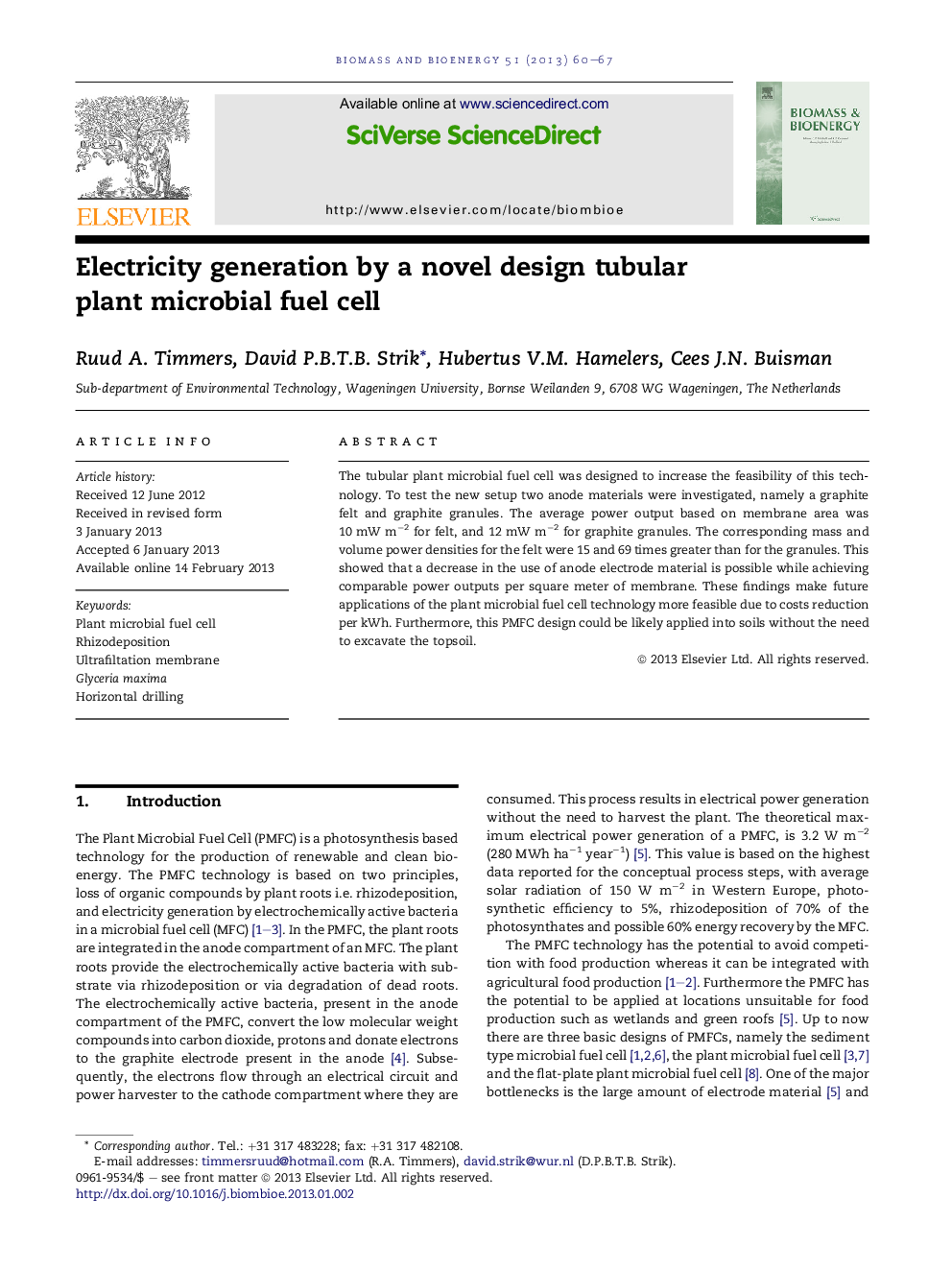| Article ID | Journal | Published Year | Pages | File Type |
|---|---|---|---|---|
| 677083 | Biomass and Bioenergy | 2013 | 8 Pages |
The tubular plant microbial fuel cell was designed to increase the feasibility of this technology. To test the new setup two anode materials were investigated, namely a graphite felt and graphite granules. The average power output based on membrane area was 10 mW m−2 for felt, and 12 mW m−2 for graphite granules. The corresponding mass and volume power densities for the felt were 15 and 69 times greater than for the granules. This showed that a decrease in the use of anode electrode material is possible while achieving comparable power outputs per square meter of membrane. These findings make future applications of the plant microbial fuel cell technology more feasible due to costs reduction per kWh. Furthermore, this PMFC design could be likely applied into soils without the need to excavate the topsoil.
► Electricity generation by novel tubular design plant microbial fuel cell. ► Decrease of anode electrode material is possible at comparable power outputs. ► Mass and volume power densities for the felt were 15 and 69 times greater than for the granules anode. ► Integrated setup makes application possible without excavation of the topsoil.
